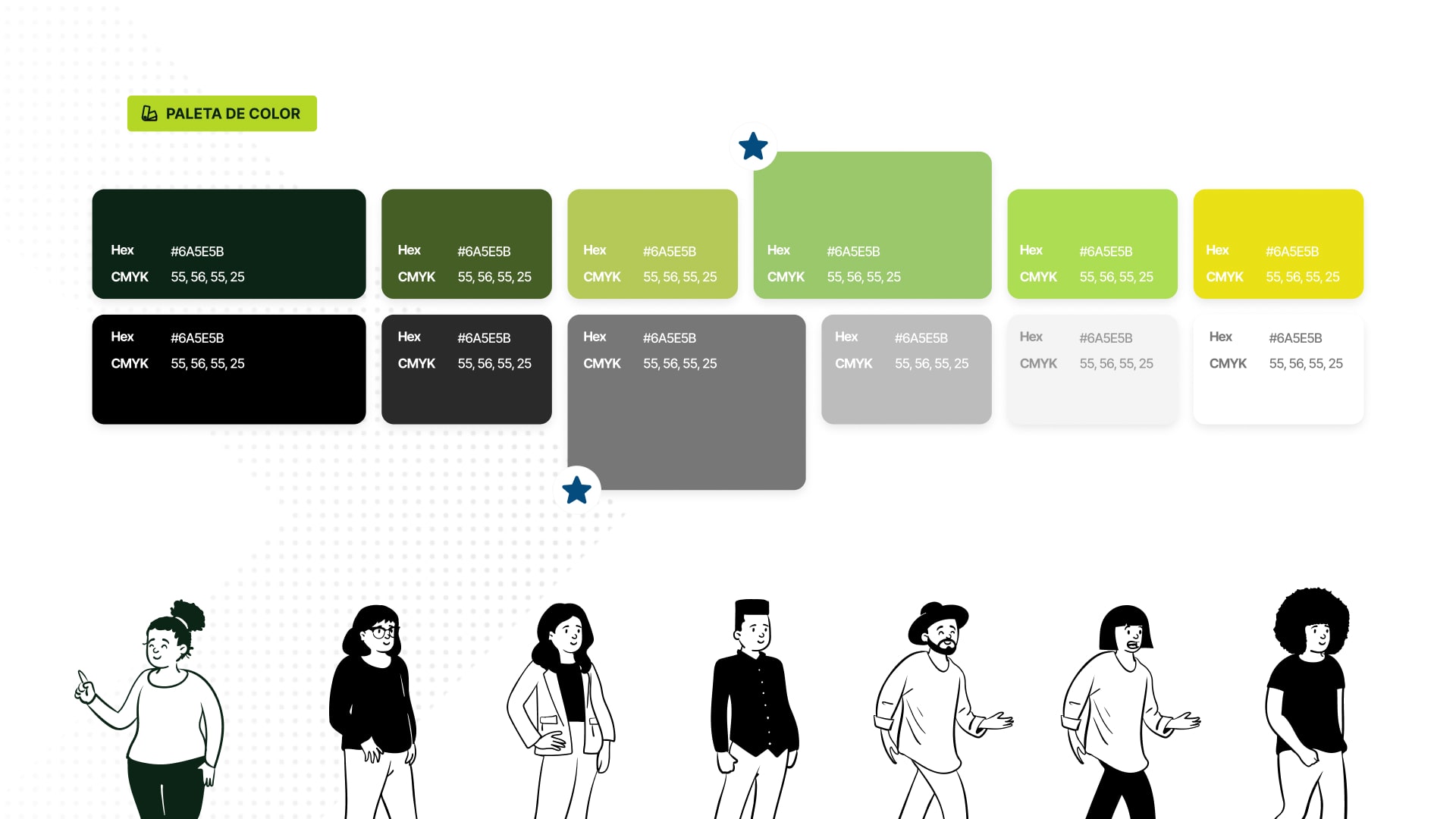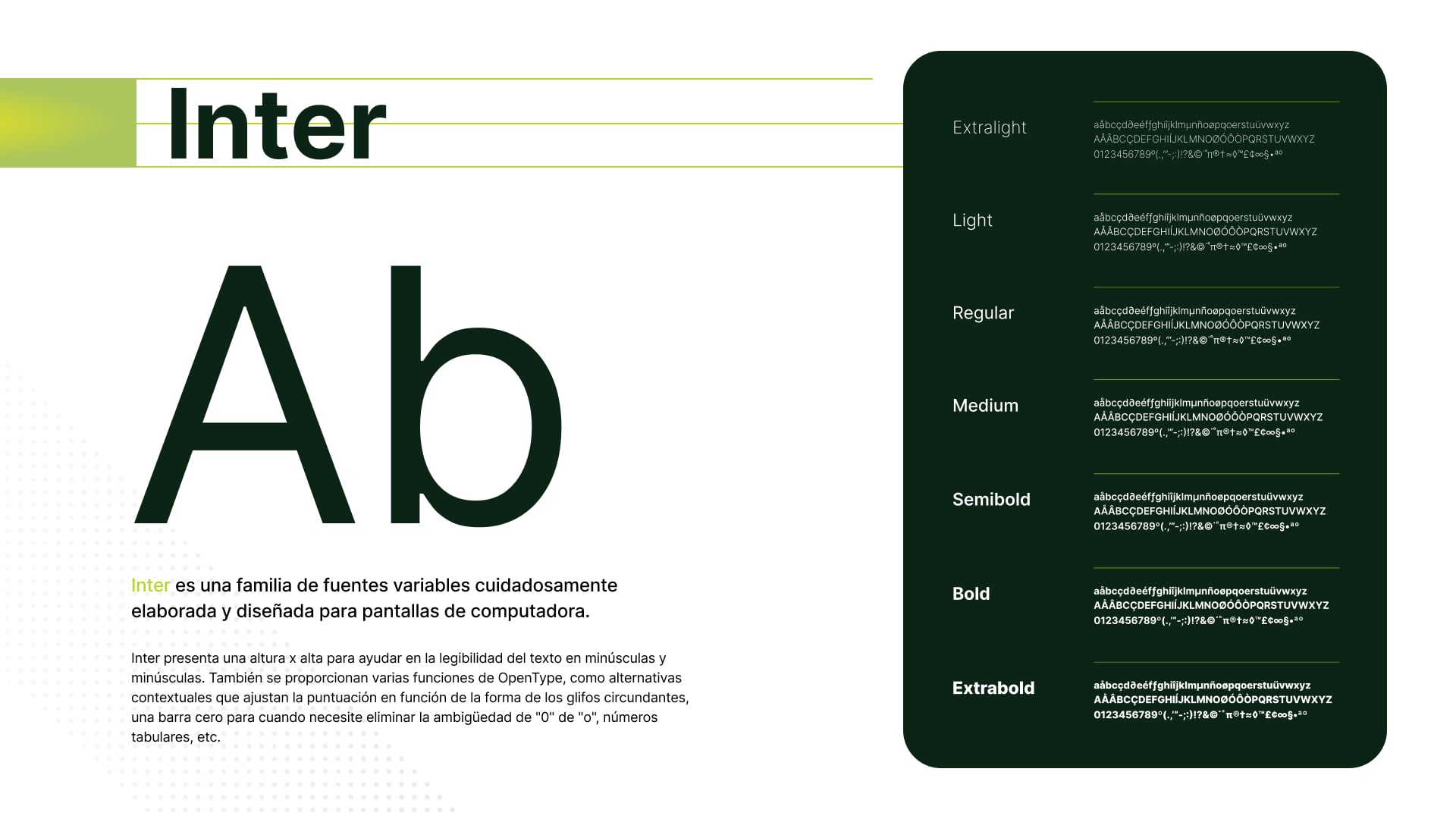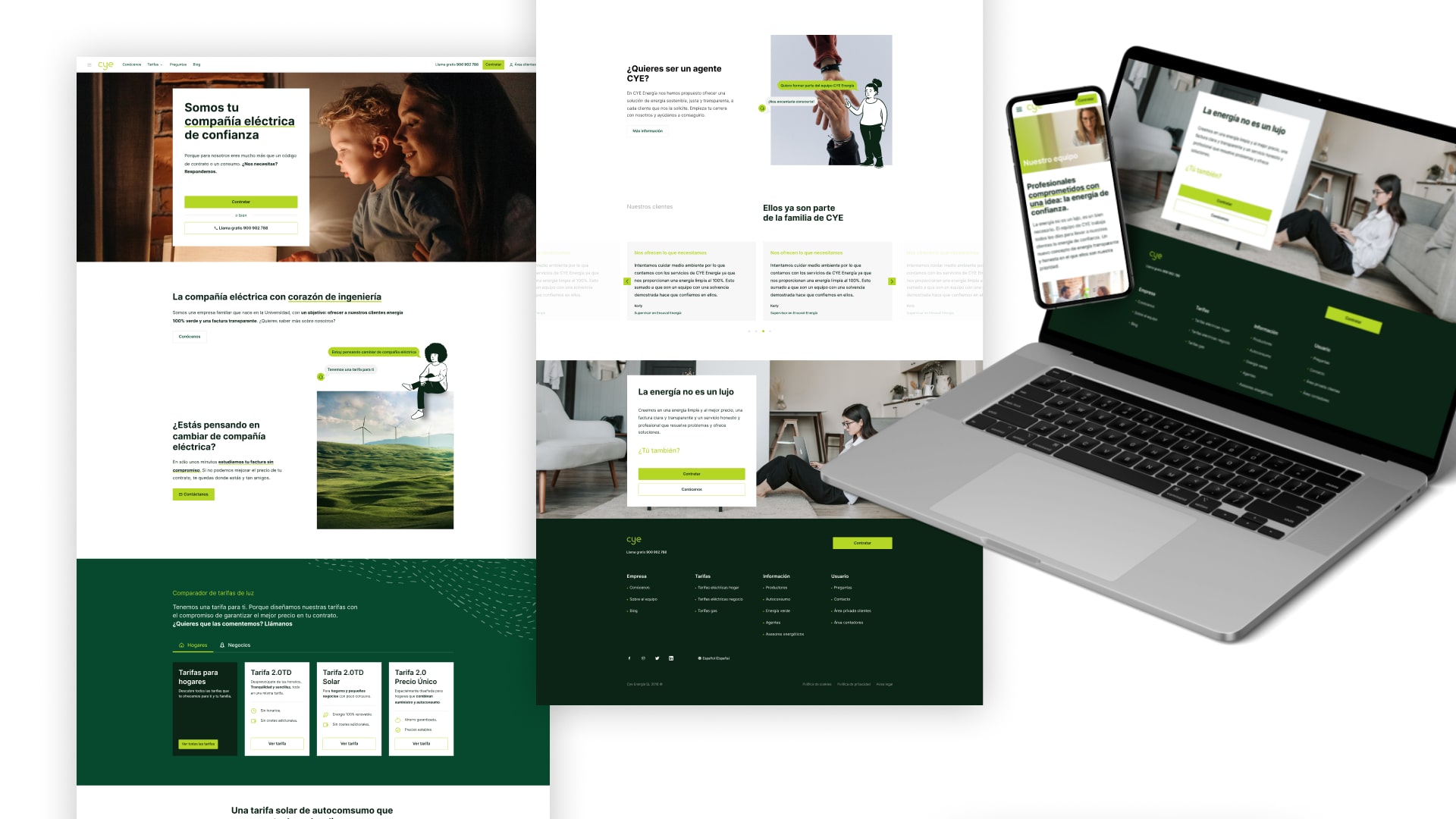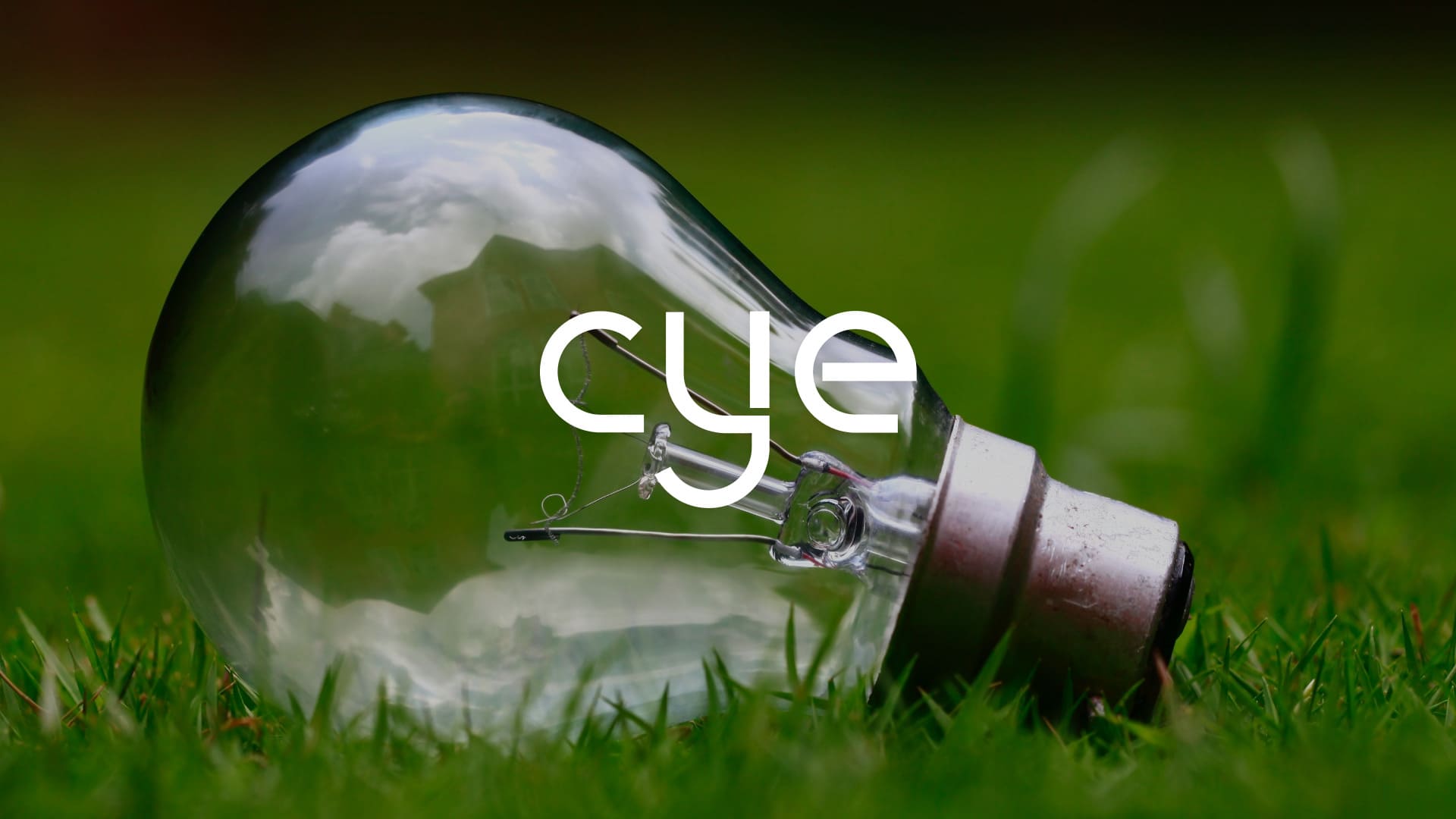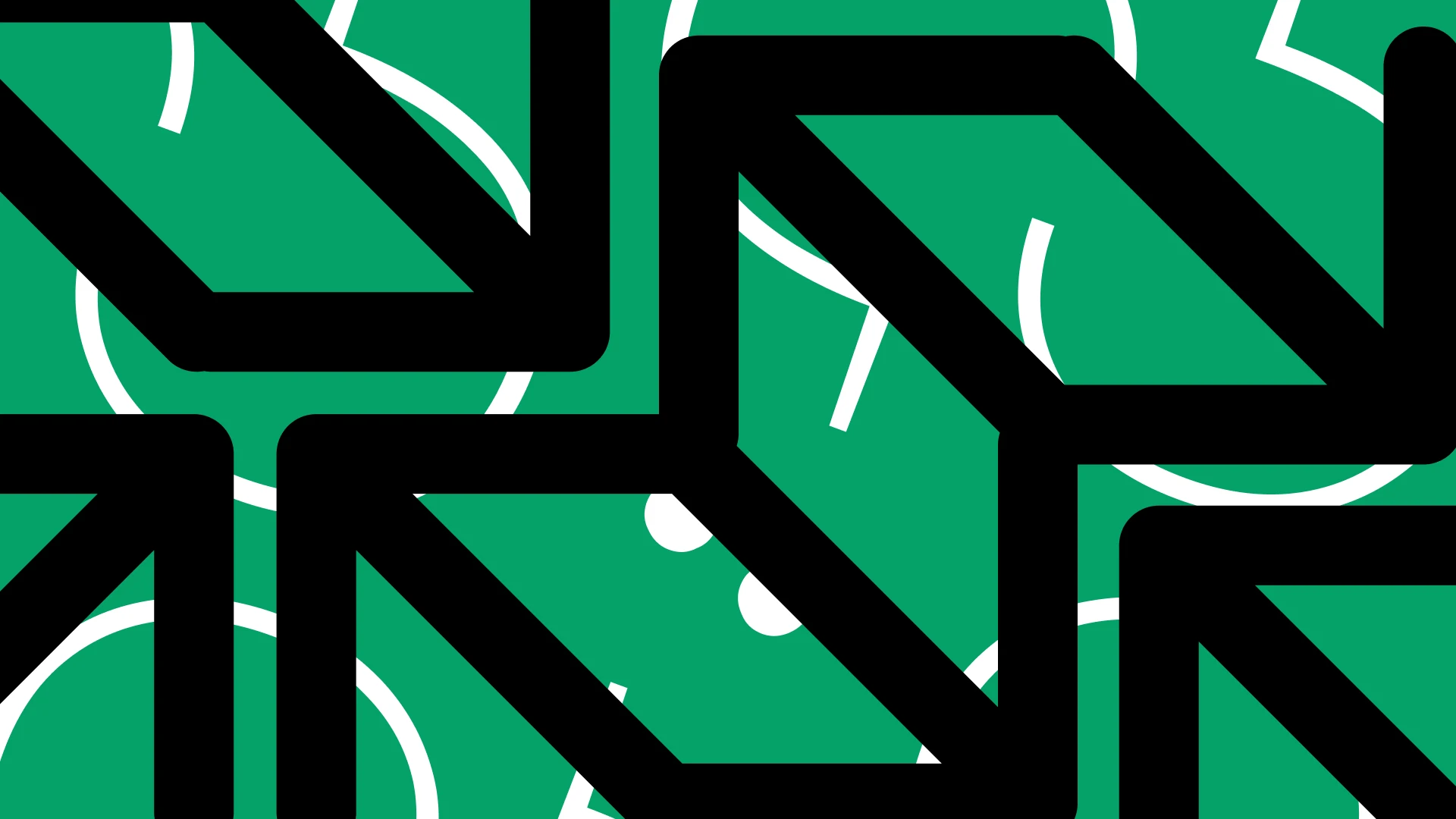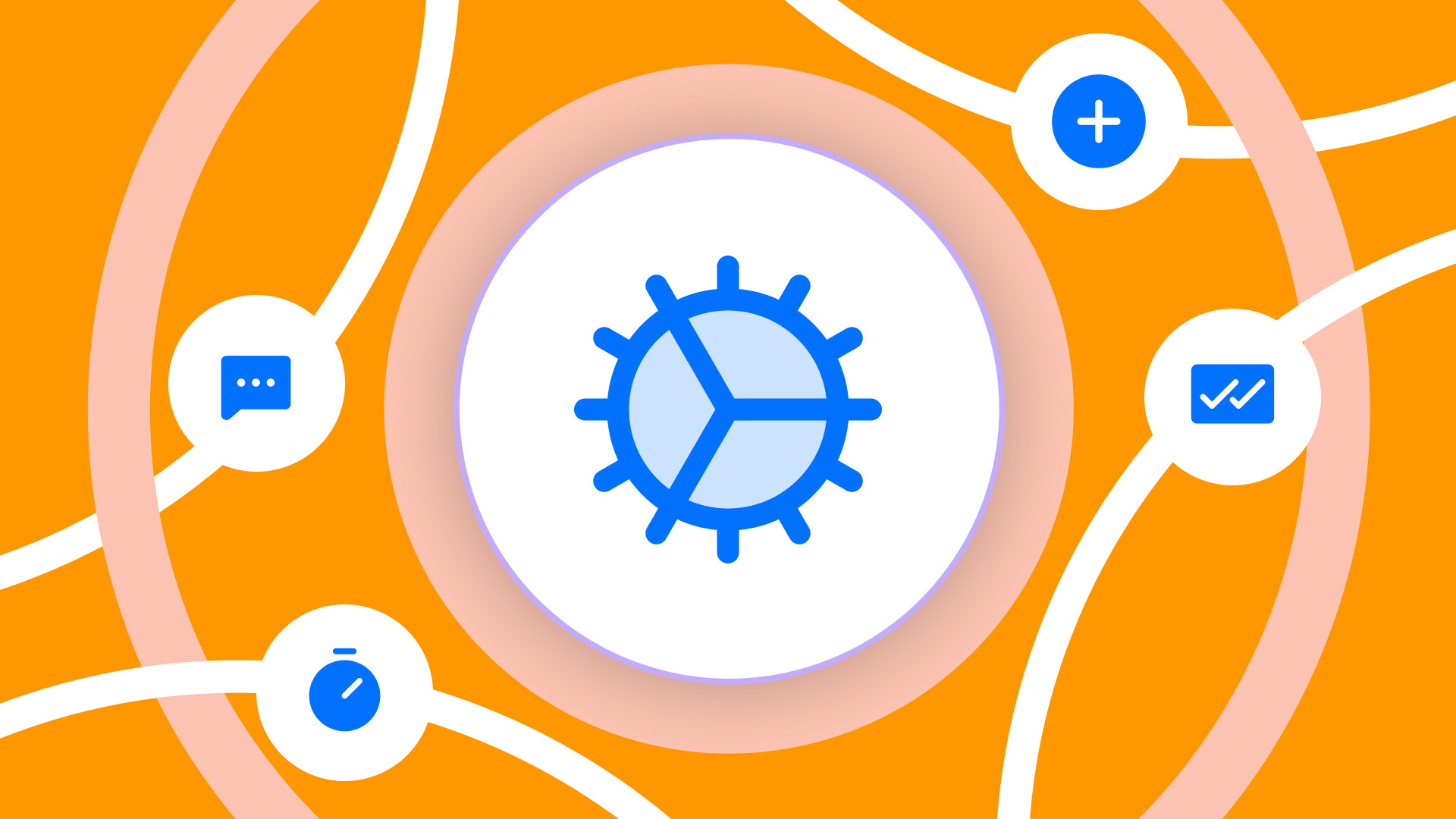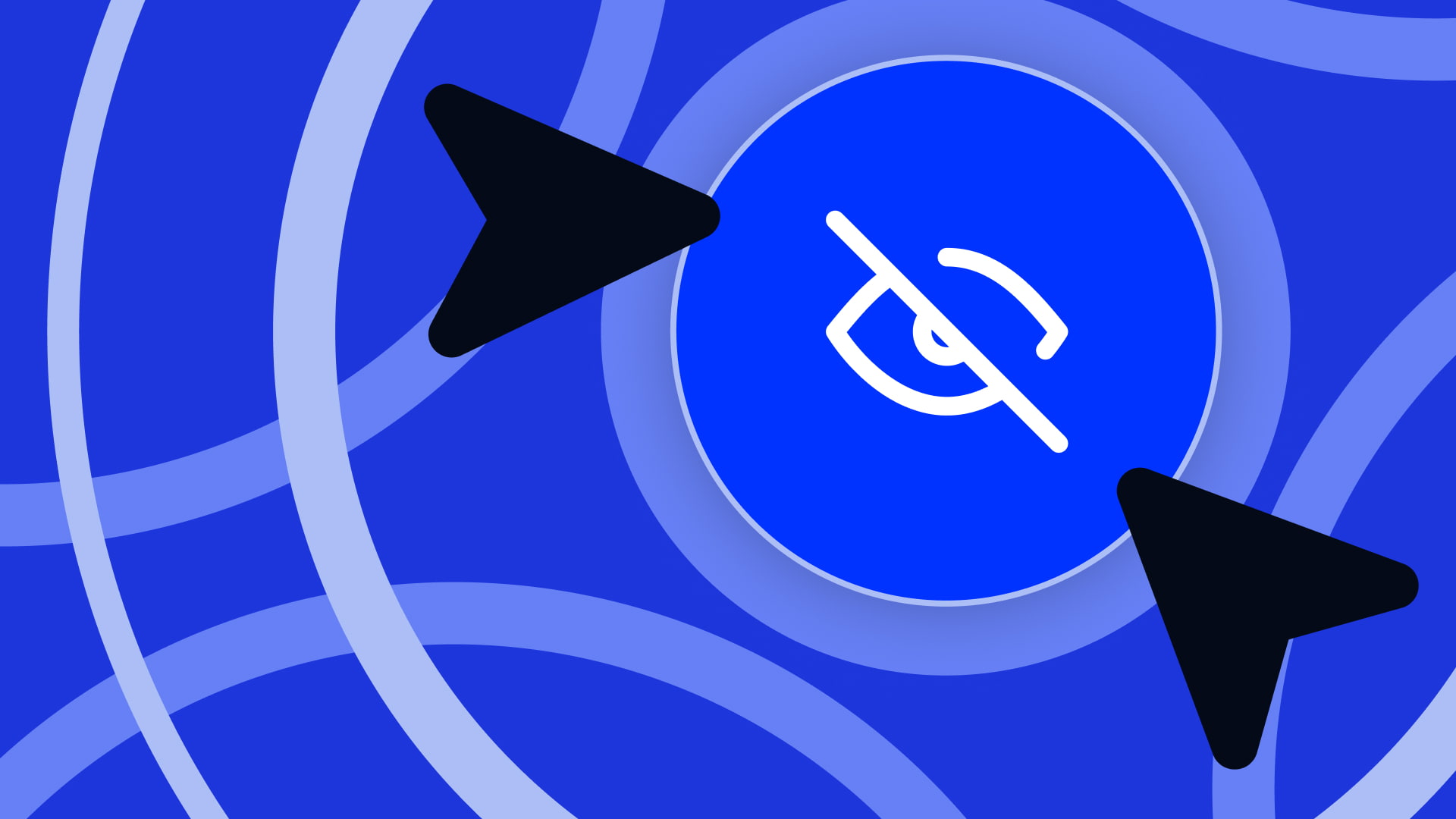There are industries that are not very competitive, others that are competitive, and some that are extremely competitive. But beyond that, there are also industries that generally inspire trust, and others that do not at all, like the energy sector.
Índice de contenidos
ToggleWhen working on a project in this industry, in addition to the usual challenges, there is an extra difficulty: standing out in a fiercely competitive market while explaining a service that few people understand and that practically no one trusts.
This was the case with CYE Energía, a Spanish energy provider that came to Audax with a challenge that was anything but simple but one that we truly enjoyed tackling. Here’s how we did it.
The Challenge
When CYE Energía contacted us, they needed a digital product that would not only showcase their catalog of services and products but also do so in a logical, understandable way with a clear, persuasive, and, most importantly, competitive value proposition.
However, as we mentioned at the beginning, in the energy sector, all of this becomes much more complex. In fact, electricity is probably one of the few things that everyone pays for every month without having a clear idea of what they are being charged for and why. At best, we wonder when we should run the washing machine to avoid surprises at the end of the month.
The volatility of prices, the lack of transparency and information, the exorbitant profits of large companies, and many other factors make a basic service like energy something almost impossible to understand and something that most, if not all, people distrust.
In this context, before designing a digital product, we first needed to conduct extensive research that would allow us to define a value proposition to build upon, aiming to counteract this widespread distrust and differentiate ourselves as much as possible from the competition.
What steps did we take to achieve this? Keep reading.
Services, Processes, and Tools
Research and Analysis
At Audax, we never tire of explaining to our clients how essential it is to conduct an audit before designing a high-quality digital product.
When clients contact us for a website redesign, they often focus solely on superficial aspects, believing that our job is simply to make the “ugly” look “beautiful” and to write catchy headlines. And while, in a way, we do that, it is just the tip of the iceberg.
The reality is that to create a high-quality digital product that aligns with the company’s values and expectations while providing an optimal user experience, it is essential to carry out a comprehensive audit. This is especially true when the company does not have a clearly defined value proposition and has never conducted this type of prior research. But what does this involve?
Understanding the company’s origins and objectives, its position relative to the competition, how it got to where it is, where it aims to go, what tools it has to achieve that, what its values are, what its pain points are, how users perceive the brand, and many other questions that we will explore later.
This is where the complexity and beauty of our work lie. Because today, with all the tools available, anyone can build a website. However, creating a solid digital product with an exceptional user experience is a different story.
It is important to understand that every company is unique, and we do not always have the same resources to conduct this audit. In the case of CYE, the steps we took were as follows:
Quantitative Research
The first thing we did was design a survey to send to CYE’s database, collecting demographic data, preferences, purchasing behaviors, online browsing habits, and any other relevant information that would help us better understand the users’ profiles and needs.
In this initial step, we always strive to go beyond the typical boring survey that no one wants to fill out. Instead, we decided to use Typeform to frame the questions in a more casual and engaging tone, making the experience more enjoyable for those who took the time to respond.
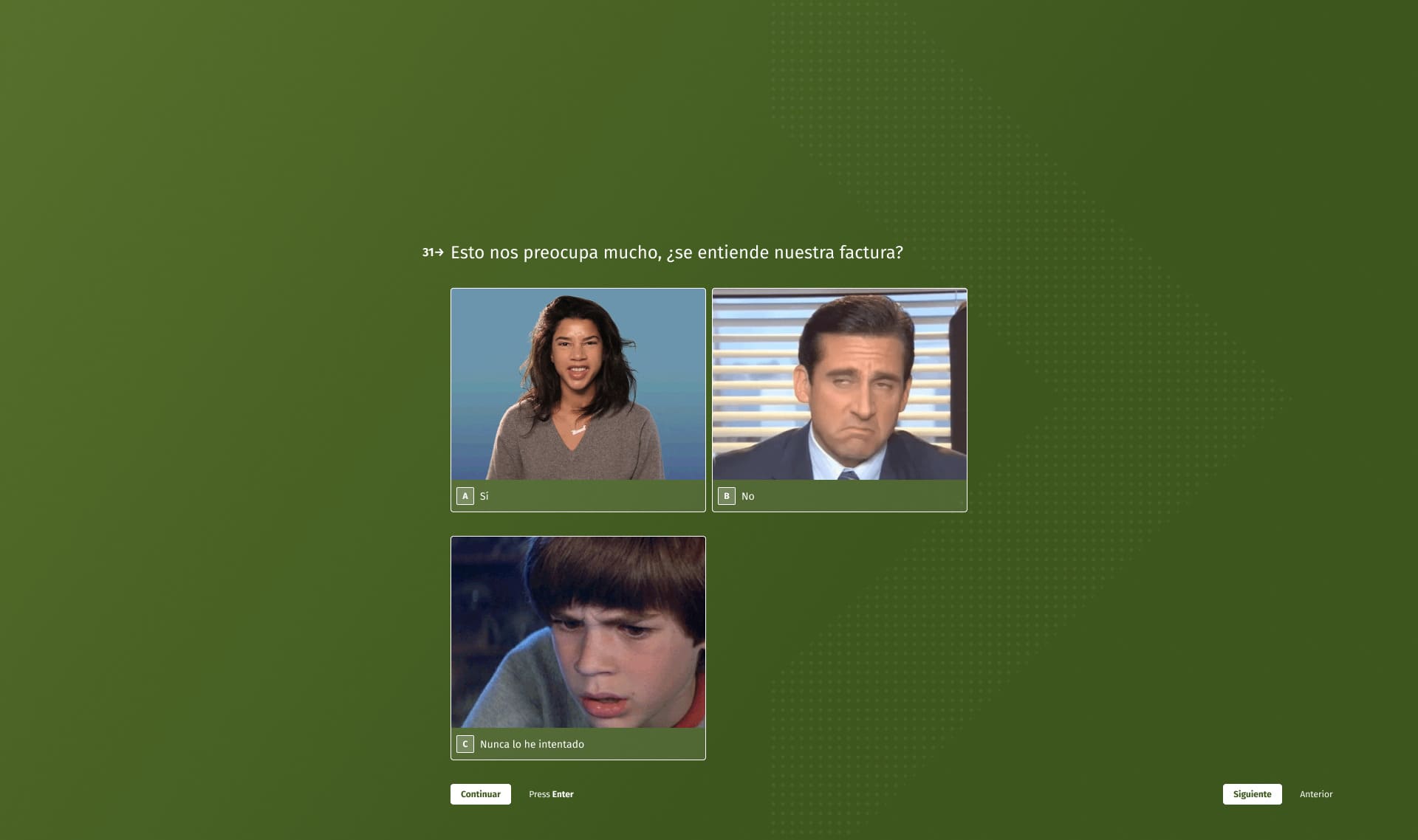
Qualitative Research
After gathering all the data in the quantitative phase, we moved on to the qualitative phase. This stage focuses on deeply understanding the thoughts, perceptions, and experiences of all relevant actors for the company. What tasks did we carry out?
Benchmark Analysis
The first thing we did was conduct an in-depth analysis of a total of 14 energy providers. In this initial phase, we examined their websites, target audiences, products and services, communication strategies, value propositions, strengths and weaknesses, and online reputations.
User Interviews
Once the benchmark was completed, we moved on to the interview phase. Normally, we start by conducting in-depth interviews with a representative sample of users.
These interviews are designed to explore their needs, desires, behaviors, and experiences related to the company’s products or services. We aim to understand how they interact with the brand, what aspects they value the most, and what areas need improvement.
In the case of CYE Energía, we were not fortunate enough to have users available for interviews, so we had to focus on the next two phases.
Stakeholder Interviews: The Key to the Project
When it comes to defining a value proposition, stakeholder interviews become a fundamental step. This phase involves interviewing different team members to understand their objectives, concerns, expectations, and any other factors that might influence the development and implementation of the digital product.
For our project with CYE Energía, and given that we did not have user interviews, this phase was crucial in identifying the value proposition.
However, it was not only crucial because we lacked user interviews. It was key because, during these conversations with the team, we realized that CYE was not just another company.
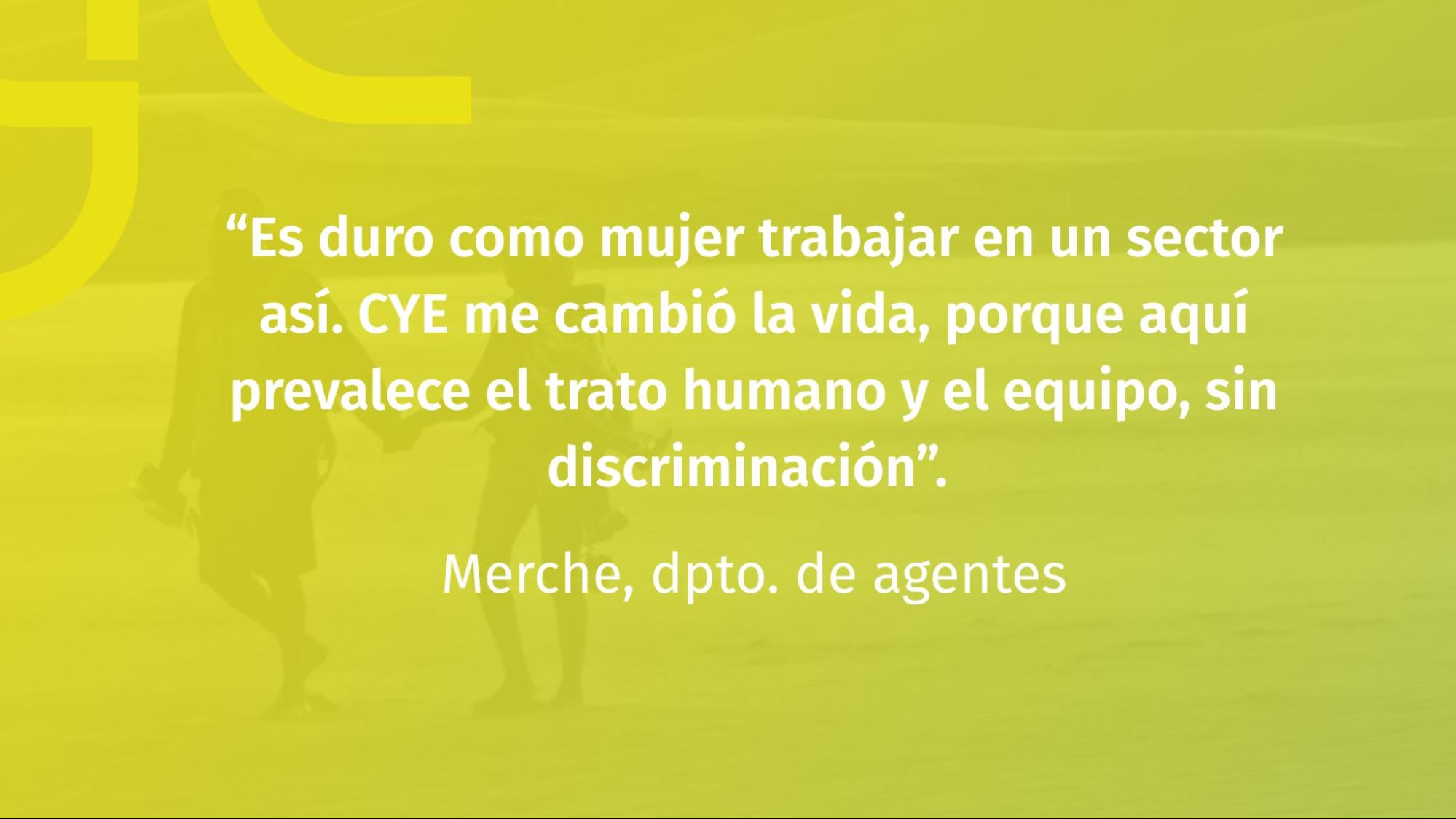
Interviewing a team member and seeing them become so emotional that they started crying says a lot. It was something we certainly did not expect to find when auditing an energy provider.
And when that happened, we all thought the same thing: we had found the value proposition.
Defining the Value Proposition: Family as a Source of Energy
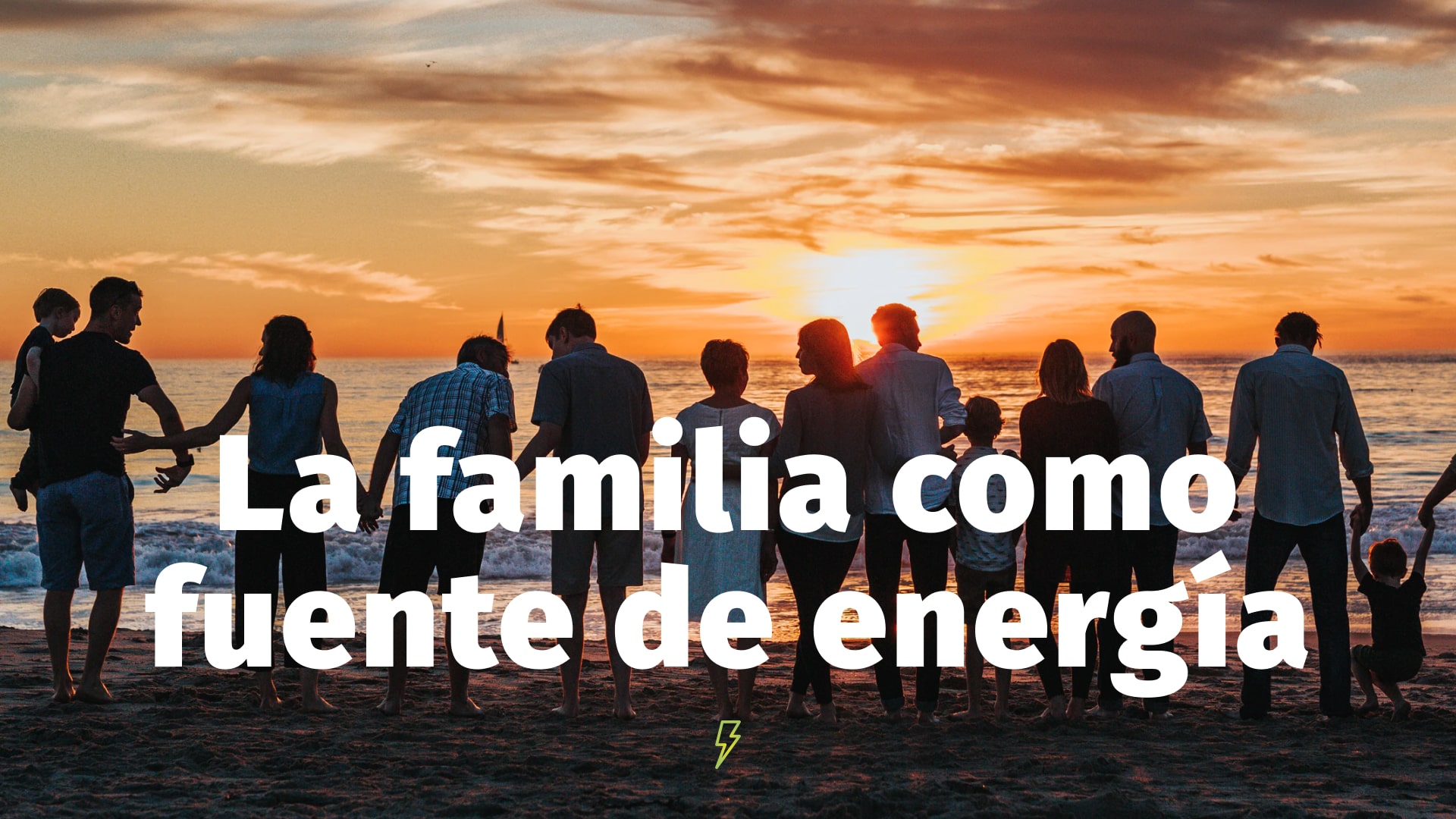
Merche’s testimony was not the only thing that led us here. Every team member we spoke with highlighted this fundamental aspect of CYE. They truly felt like a family, and they were not saying it to please their bosses. They meant it, and we witnessed it firsthand.
Now you might be wondering, why would a customer care about a company’s work environment? The answer is that the concept of family goes far beyond CYE’s internal culture. It perfectly represents what they offer to their agents and end customers.
Family supports you, family does not lie to you, family backs you up, family does not abandon you.
These are the exact things that CYE customers experience. They do not stay because of the prices, as CYE does not offer particularly competitive rates. They stay for the peace of mind, the service, and the trust.
At CYE, and we encourage you to see for yourself, they do not use chatbots or automated systems. Their customer service is outstanding, something that might sound like fiction in the energy sector. When you call, a real person answers and truly advises you. And although it sounds sad, that is a huge competitive advantage.
Another one is that you can call even if you are not a customer, and they will explain your electricity bill in detail so you can understand what you are paying for. And no, they are not the kind who do this just to lure you in with a misleading offer. If they cannot offer you better conditions, you simply stay where you are, and that is the end of it.
Ultimately, CYE Energía represented the same values as an ideal family: trust, transparency, closeness, and support.
Corporate Website Design
Once we had the value proposition, the next step was to properly translate it into their digital product. How did we do it?
From creating the sitemap to UI design, we focused on highlighting CYE’s narrative and core values. It was crucial to convey the company’s closeness and transparency from the first interaction, so we prioritized key sections like “About Us,” combining strong copywriting with a design that was 100% focused on communicating these values.
The Power of Content
The copywriting strategy for this project focused on adopting a direct and clear tone that would immediately connect with users and effectively address their pain points.
Each message was carefully crafted to reflect the closeness and trustworthiness that define CYE Energía. The clearest example of this is the hero section headline on the homepage (“Somos tu compañía eléctrica de confianza” / “We are your trusted electricity provider”). However, this approach extended to every page and section of the website, including areas that are typically more neutral or technical, such as pricing plans.
Even in these sections, we ensured that key company values—such as transparency and commitment to customer satisfaction—remained central. Phrases like “La luz, cuanto más clara, mejor” (“The clearer the light, the better”) and “Creemos en una energía limpia y al mejor precio” (“We believe in clean energy at the best price”) reinforced the brand’s identity and created a consistent experience across all user interactions with the platform.
UI: The Final Touch
For the user interface (UI), we focused on several key aspects to reinforce the brand’s value proposition and convey the approachable, user-friendly personality that defines CYE Energía:
- Carefully selected images designed to convey everyday moments and foster a sense of familiarity with users.
- Strategic use of illustrations to complement and enhance the casual and friendly tone of the content—something rarely seen in the energy sector.
- Font size variations to highlight headlines, adding impact and ensuring coherence with the direct and honest tone of the content.
- A clean, minimalist design that presents information clearly and concisely, improving user navigation and eliminating the confusion often found on other industry websites.
Want to see the final result?
